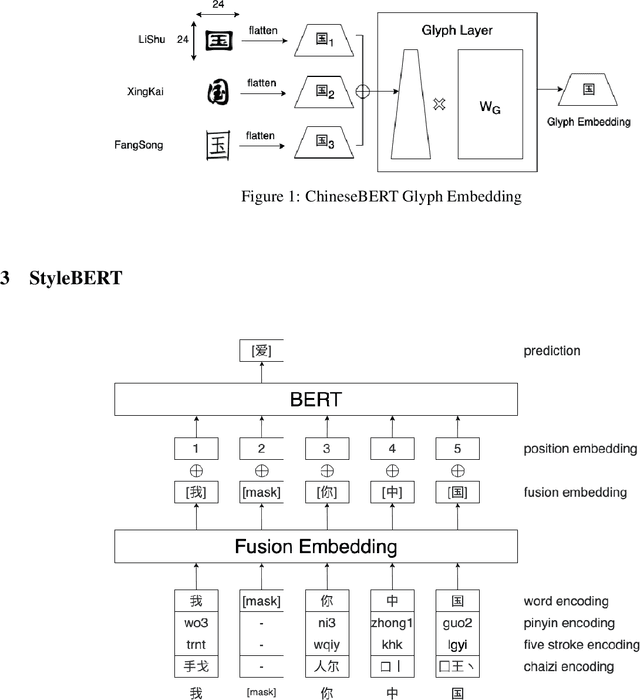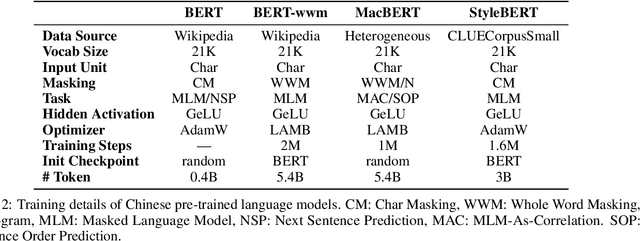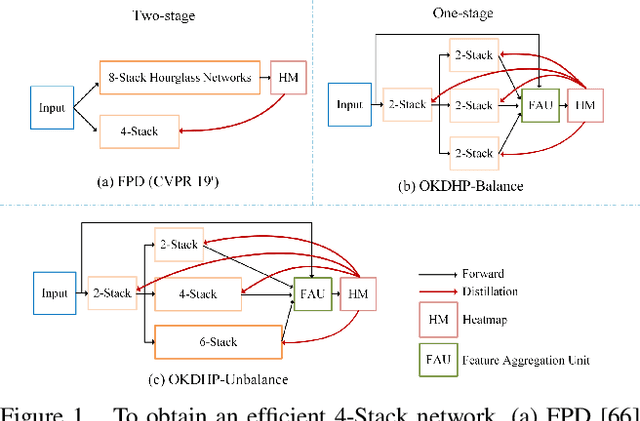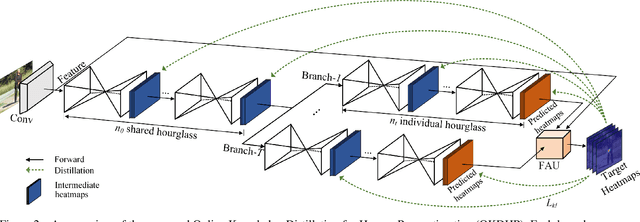Ying Huang
AdaCM$^2$: On Understanding Extremely Long-Term Video with Adaptive Cross-Modality Memory Reduction
Nov 19, 2024Abstract:The advancements in large language models (LLMs) have propelled the improvement of video understanding tasks by incorporating LLMs with visual models. However, most existing LLM-based models (e.g., VideoLLaMA, VideoChat) are constrained to processing short-duration videos. Recent attempts to understand long-term videos by extracting and compressing visual features into a fixed memory size. Nevertheless, those methods leverage only visual modality to merge video tokens and overlook the correlation between visual and textual queries, leading to difficulties in effectively handling complex question-answering tasks. To address the challenges of long videos and complex prompts, we propose AdaCM$^2$, which, for the first time, introduces an adaptive cross-modality memory reduction approach to video-text alignment in an auto-regressive manner on video streams. Our extensive experiments on various video understanding tasks, such as video captioning, video question answering, and video classification, demonstrate that AdaCM$^2$ achieves state-of-the-art performance across multiple datasets while significantly reducing memory usage. Notably, it achieves a 4.5% improvement across multiple tasks in the LVU dataset with a GPU memory consumption reduction of up to 65%.
Beyond Point Annotation: A Weakly Supervised Network Guided by Multi-Level Labels Generated from Four-Point Annotation for Thyroid Nodule Segmentation in Ultrasound Image
Oct 25, 2024



Abstract:Weakly-supervised methods typically guided the pixel-wise training by comparing the predictions to single-level labels containing diverse segmentation-related information at once, but struggled to represent delicate feature differences between nodule and background regions and confused incorrect information, resulting in underfitting or overfitting in the segmentation predictions. In this work, we propose a weakly-supervised network that generates multi-level labels from four-point annotation to refine diverse constraints for delicate nodule segmentation. The Distance-Similarity Fusion Prior referring to the points annotations filters out information irrelevant to nodules. The bounding box and pure foreground/background labels, generated from the point annotation, guarantee the rationality of the prediction in the arrangement of target localization and the spatial distribution of target/background regions, respectively. Our proposed network outperforms existing weakly-supervised methods on two public datasets with respect to the accuracy and robustness, improving the applicability of deep-learning based segmentation in the clinical practice of thyroid nodule diagnosis.
S3Former: Self-supervised High-resolution Transformer for Solar PV Profiling
May 07, 2024Abstract:As the impact of climate change escalates, the global necessity to transition to sustainable energy sources becomes increasingly evident. Renewable energies have emerged as a viable solution for users, with Photovoltaic energy being a favored choice for small installations due to its reliability and efficiency. Accurate mapping of PV installations is crucial for understanding the extension of its adoption and informing energy policy. To meet this need, we introduce S3Former, designed to segment solar panels from aerial imagery and provide size and location information critical for analyzing the impact of such installations on the grid. Solar panel identification is challenging due to factors such as varying weather conditions, roof characteristics, Ground Sampling Distance variations and lack of appropriate initialization weights for optimized training. To tackle these complexities, S3Former features a Masked Attention Mask Transformer incorporating a self-supervised learning pretrained backbone. Specifically, our model leverages low-level and high-level features extracted from the backbone and incorporates an instance query mechanism incorporated on the Transformer architecture to enhance the localization of solar PV installations. We introduce a self-supervised learning phase (pretext task) to improve the initialization weights on the backbone of S3Former. We evaluated S3Former using diverse datasets, demonstrate improvement state-of-the-art models.
Practical considerations for variable screening in the Super Learner
Nov 06, 2023Abstract:Estimating a prediction function is a fundamental component of many data analyses. The Super Learner ensemble, a particular implementation of stacking, has desirable theoretical properties and has been used successfully in many applications. Dimension reduction can be accomplished by using variable screening algorithms, including the lasso, within the ensemble prior to fitting other prediction algorithms. However, the performance of a Super Learner using the lasso for dimension reduction has not been fully explored in cases where the lasso is known to perform poorly. We provide empirical results that suggest that a diverse set of candidate screening algorithms should be used to protect against poor performance of any one screen, similar to the guidance for choosing a library of prediction algorithms for the Super Learner.
SolarFormer: Multi-scale Transformer for Solar PV Profiling
Oct 30, 2023Abstract:As climate change intensifies, the global imperative to shift towards sustainable energy sources becomes more pronounced. Photovoltaic (PV) energy is a favored choice due to its reliability and ease of installation. Accurate mapping of PV installations is crucial for understanding their adoption and informing energy policy. To meet this need, we introduce the SolarFormer, designed to segment solar panels from aerial imagery, offering insights into their location and size. However, solar panel identification in Computer Vision is intricate due to various factors like weather conditions, roof conditions, and Ground Sampling Distance (GSD) variations. To tackle these complexities, we present the SolarFormer, featuring a multi-scale Transformer encoder and a masked-attention Transformer decoder. Our model leverages low-level features and incorporates an instance query mechanism to enhance the localization of solar PV installations. We rigorously evaluated our SolarFormer using diverse datasets, including GGE (France), IGN (France), and USGS (California, USA), across different GSDs. Our extensive experiments consistently demonstrate that our model either matches or surpasses state-of-the-art models, promising enhanced solar panel segmentation for global sustainable energy initiatives.
On the robust learning mixtures of linear regressions
May 23, 2023Abstract:In this note, we consider the problem of robust learning mixtures of linear regressions. We connect mixtures of linear regressions and mixtures of Gaussians with a simple thresholding, so that a quasi-polynomial time algorithm can be obtained under some mild separation condition. This algorithm has significantly better robustness than the previous result.
Lithium Metal Battery Quality Control via Transformer-CNN Segmentation
Feb 09, 2023



Abstract:Lithium metal battery (LMB) has the potential to be the next-generation battery system because of their high theoretical energy density. However, defects known as dendrites are formed by heterogeneous lithium (Li) plating, which hinder the development and utilization of LMBs. Non-destructive techniques to observe the dendrite morphology often use computerized X-ray tomography (XCT) imaging to provide cross-sectional views. To retrieve three-dimensional structures inside a battery, image segmentation becomes essential to quantitatively analyze XCT images. This work proposes a new binary semantic segmentation approach using a transformer-based neural network (T-Net) model capable of segmenting out dendrites from XCT data. In addition, we compare the performance of the proposed T-Net with three other algorithms, such as U-Net, Y-Net, and E-Net, consisting of an Ensemble Network model for XCT analysis. Our results show the advantages of using T-Net in terms of object metrics, such as mean Intersection over Union (mIoU) and mean Dice Similarity Coefficient (mDSC) as well as qualitatively through several comparative visualizations.
SsciBERT: A Pre-trained Language Model for Social Science Texts
Jun 11, 2022



Abstract:The academic literature of social sciences is the literature that records human civilization and studies human social problems. With the large-scale growth of this literature, ways to quickly find existing research on relevant issues have become an urgent demand for researchers. Previous studies, such as SciBERT, have shown that pre-training using domain-specific texts can improve the performance of natural language processing tasks in those fields. However, there is no pre-trained language model for social sciences, so this paper proposes a pre-trained model on many abstracts published in the Social Science Citation Index (SSCI) journals. The models, which are available on Github (https://github.com/S-T-Full-Text-Knowledge-Mining/SSCI-BERT), show excellent performance on discipline classification and abstract structure-function recognition tasks with the social sciences literature.
StyleBERT: Chinese pretraining by font style information
Feb 23, 2022



Abstract:With the success of down streaming task using English pre-trained language model, the pre-trained Chinese language model is also necessary to get a better performance of Chinese NLP task. Unlike the English language, Chinese has its special characters such as glyph information. So in this article, we propose the Chinese pre-trained language model StyleBERT which incorporate the following embedding information to enhance the savvy of language model, such as word, pinyin, five stroke and chaizi. The experiments show that the model achieves well performances on a wide range of Chinese NLP tasks.
Online Knowledge Distillation for Efficient Pose Estimation
Aug 04, 2021



Abstract:Existing state-of-the-art human pose estimation methods require heavy computational resources for accurate predictions. One promising technique to obtain an accurate yet lightweight pose estimator is knowledge distillation, which distills the pose knowledge from a powerful teacher model to a less-parameterized student model. However, existing pose distillation works rely on a heavy pre-trained estimator to perform knowledge transfer and require a complex two-stage learning procedure. In this work, we investigate a novel Online Knowledge Distillation framework by distilling Human Pose structure knowledge in a one-stage manner to guarantee the distillation efficiency, termed OKDHP. Specifically, OKDHP trains a single multi-branch network and acquires the predicted heatmaps from each, which are then assembled by a Feature Aggregation Unit (FAU) as the target heatmaps to teach each branch in reverse. Instead of simply averaging the heatmaps, FAU which consists of multiple parallel transformations with different receptive fields, leverages the multi-scale information, thus obtains target heatmaps with higher-quality. Specifically, the pixel-wise Kullback-Leibler (KL) divergence is utilized to minimize the discrepancy between the target heatmaps and the predicted ones, which enables the student network to learn the implicit keypoint relationship. Besides, an unbalanced OKDHP scheme is introduced to customize the student networks with different compression rates. The effectiveness of our approach is demonstrated by extensive experiments on two common benchmark datasets, MPII and COCO.
 Add to Chrome
Add to Chrome Add to Firefox
Add to Firefox Add to Edge
Add to Edge